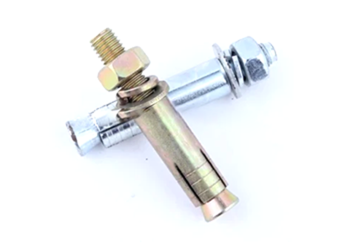Nov . 01, 2024 15:11 Back to list
Methods for Securing Bolts and Nuts Effectively in Mechanical Applications
The Importance of Torque in Tightening Bolts and Nuts
When it comes to mechanical engineering, construction, and maintenance, the importance of correctly tightening bolts and nuts cannot be overstated. It is a fundamental practice that ensures the integrity and safety of assemblies across various applications, from automobiles to bridges. However, to achieve the desired clamping force, it is essential to understand and apply the concept of torque effectively.
Torque is defined as the rotational force applied to an object. In the context of tightening bolts and nuts, torque is the measure of how much a force acting on an object causes that object to rotate. Proper torque application is crucial because insufficient torque may lead to loose components, while excessive torque can strip threads or even break the fasteners.
The Basics of Using Torque Tools
To tighten bolts and nuts effectively, a variety of tools are available, ranging from simple hand tools to sophisticated electronic torque wrenches. For many applications, a standard torque wrench suffices. This tool allows the user to apply a specific amount of torque to a fastener, ensuring that the connection is both strong and secure.
When using a torque wrench, it is essential to understand the specifications for the fasteners in use. Different materials and diameters have different torque requirements, which manufacturers typically provide in a torque specification chart. It is critical to follow these guidelines to avoid failures that could arise from improper tightening.
Factors Influencing Torque Applications
use to tighten bolts and nuts

Several factors influence how torque is applied when tightening bolts and nuts. One of these is the type of lubrication used on the fastener threads. Lubrication reduces friction, which means that less torque is needed to achieve the same clamping force. Conversely, if bolts are tightened dry without lubrication, the necessary torque to achieve proper tightening will be higher.
Another factor is the surface condition of the bolted joints. Clean, smooth surfaces will allow for better clamping force than dirty or rusty surfaces, which may require higher torque to achieve the same effect. It is always advisable to clean the surfaces of both the bolt and the nut before assembly to achieve optimal results.
The Consequences of Poor Torque Practice
Failing to apply the correct torque can have serious consequences. Over-tightening can lead to bolt failure, stripping of threads, or even compromising the integrity of the materials being fastened together. On the flip side, under-tightening can cause vibrations to loosen fasteners, potentially leading to equipment failure or hazardous situations.
In automotive industries, for example, improper torque can lead to brake failure, resulting in catastrophic accidents. In construction, inadequate tightening of bolts can compromise the structural integrity of buildings, bridges, and other vital infrastructure.
Conclusion
In summary, the proper technique for tightening bolts and nuts involves understanding the importance of torque and its application. Utilizing the right tools, adhering to torque specifications, and recognizing the various factors that influence torque can significantly enhance the effectiveness of assemblies. Ultimately, fostering a conscientious approach to this fundamental practice is essential for safety, reliability, and durability in any construction or mechanical project. Investing time in mastering this skill can lead to significant long-term benefits in engineering and maintenance tasks alike.


